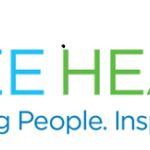ADHD diagnoses are on the rise, and looking at trends over the past few decades, there’s no sign of this trend slowing down anytime soon. Today, an estimated one in nine children in the U.S. have an ADHD diagnosis as compared to about one in 20 in the 1980s.
But ADHD is just one of the many conditions that have shown a similar progression. Anxiety and depression mimic the ADHD trend. Not to mention other ailments that may not receive a formal diagnosis, like stress levels continuing to increase and sleep issues rising as a result.
It’s easy to see how the lines can get blurred between these types of conditions. They’re complex and oftentimes a symptom checklist isn’t enough to get the whole picture. Someone with ADHD, for example, might show symptoms aligning with anxiety. On top of that, people will frequently have co-existing conditions – like depression that causes stress and anxiety.
 Neurocore uses a select suite of checklists and tests as part of the diagnostic assessment process, allowing for a clear picture of what the client is experiencing. The suite includes industry gold standard behavioral checklists that covers ADHD, anxiety, and depression symptom domains. Validated sleep questionnaires, as well as sustained focus and performance tests, are also used. Based on the results of the questionnaires and the intake interview conducted by clinical specialists, the DSM-5 is then used to make a diagnosis.
Neurocore uses a select suite of checklists and tests as part of the diagnostic assessment process, allowing for a clear picture of what the client is experiencing. The suite includes industry gold standard behavioral checklists that covers ADHD, anxiety, and depression symptom domains. Validated sleep questionnaires, as well as sustained focus and performance tests, are also used. Based on the results of the questionnaires and the intake interview conducted by clinical specialists, the DSM-5 is then used to make a diagnosis.In addition, Neurocore also conducts a 19-channel full cap QEEG, which generates a brain map. This map is used to help gain an understanding of what is happening at the brain level by comparing it to an age-normed database. By determining how optimally the brain is functioning, we can pinpoint the root cause of what is contributing to any unwanted symptoms or challenges. The brain map, along with the DSM-5 diagnosis, allows for a greater level of insight into the client or patient’s symptoms and concerns.
The final component to the assessment looks at heart rate variability. This important test measures heart rate and breathing patterns. Data is then analyzed to determine if the client’s heart and lungs are functioning cohesively with one another. Good cohesion between the respiratory and cardiovascular systems is vital to brain health.
This combination of standardized, reliable, and validated testing allows for an accurate and holistic look at a client’s areas of concern. With this vital information, a comprehensive report can be provided to all referring physicians, inclusive of a formal diagnosis.
Neurocore is in network with numerous insurance carriers – all of which cover the assessment.

























